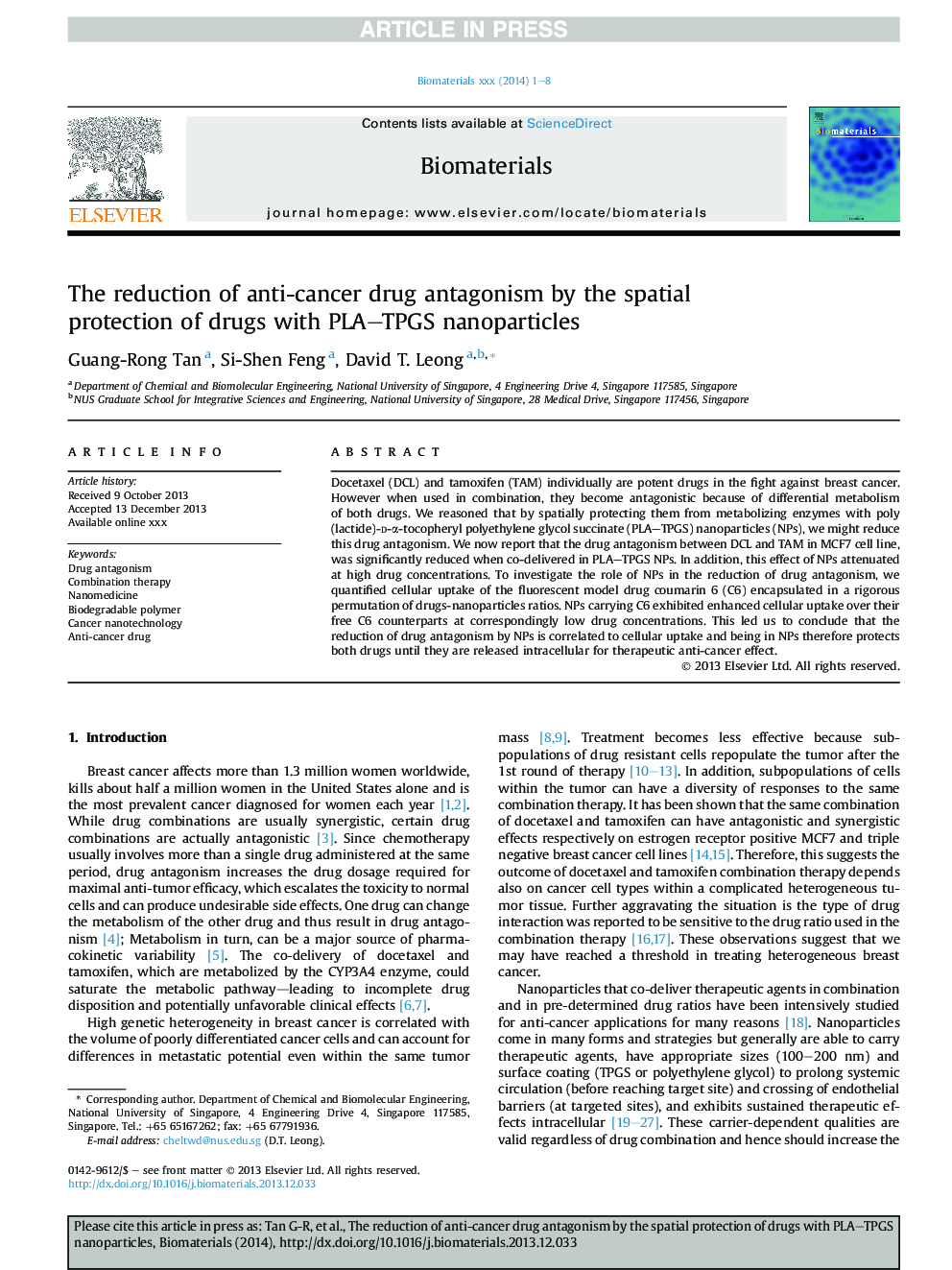| Article ID | Journal | Published Year | Pages | File Type |
|---|---|---|---|---|
| 10227894 | Biomaterials | 2014 | 8 Pages |
Abstract
Docetaxel (DCL) and tamoxifen (TAM) individually are potent drugs in the fight against breast cancer. However when used in combination, they become antagonistic because of differential metabolism of both drugs. We reasoned that by spatially protecting them from metabolizing enzymes with poly (lactide)-d-α-tocopheryl polyethylene glycol succinate (PLA-TPGS) nanoparticles (NPs), we might reduce this drug antagonism. We now report that the drug antagonism between DCL and TAM in MCF7 cell line, was significantly reduced when co-delivered in PLA-TPGS NPs. In addition, this effect of NPs attenuated at high drug concentrations. To investigate the role of NPs in the reduction of drug antagonism, we quantified cellular uptake of the fluorescent model drug coumarin 6 (C6) encapsulated in a rigorous permutation of drugs-nanoparticles ratios. NPs carrying C6 exhibited enhanced cellular uptake over their free C6 counterparts at correspondingly low drug concentrations. This led us to conclude that the reduction of drug antagonism by NPs is correlated to cellular uptake and being in NPs therefore protects both drugs until they are released intracellular for therapeutic anti-cancer effect.
Keywords
Related Topics
Physical Sciences and Engineering
Chemical Engineering
Bioengineering
Authors
Guang-Rong Tan, Si-Shen Feng, David T. Leong,
